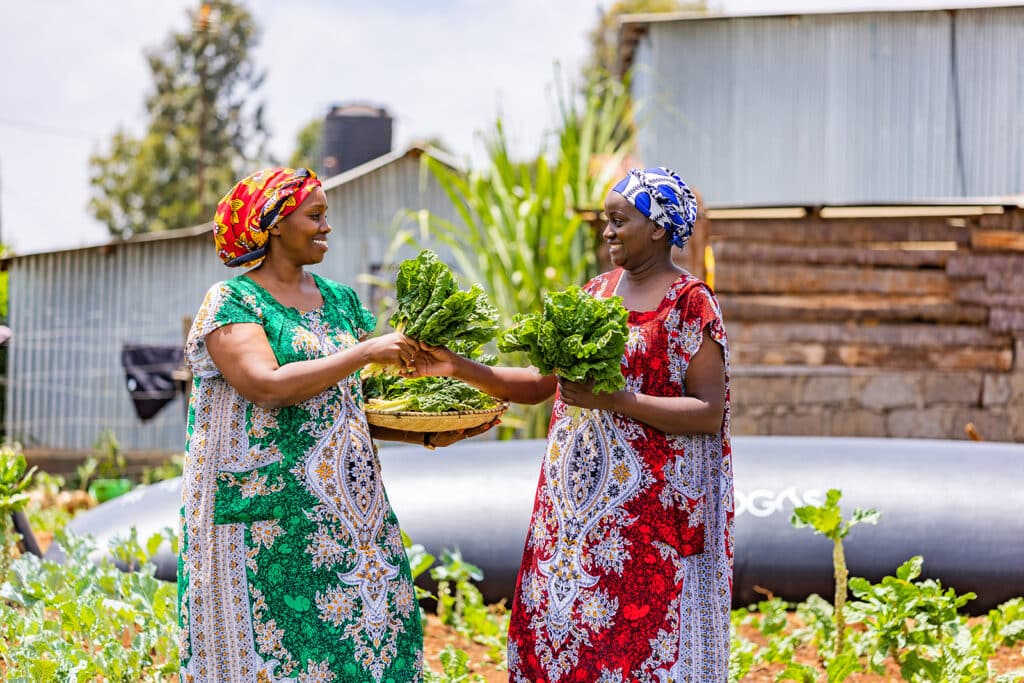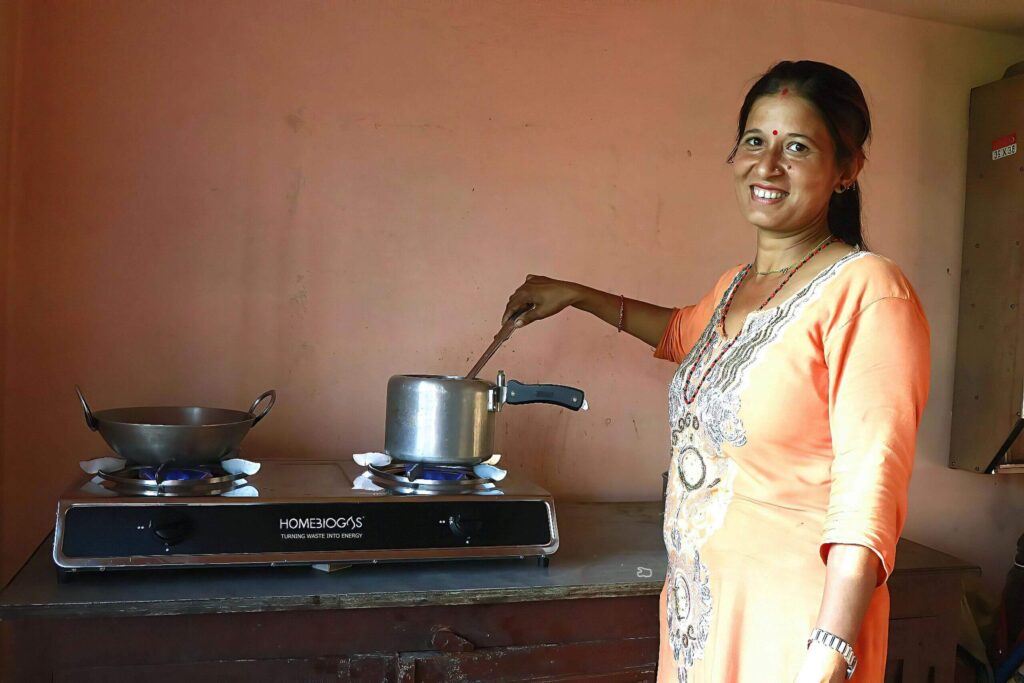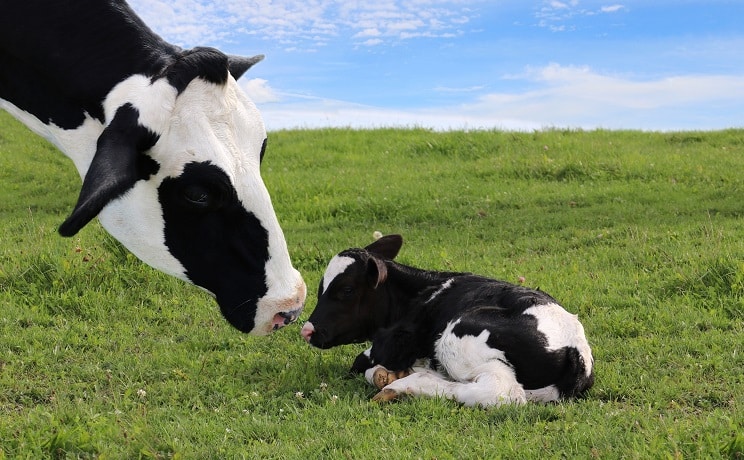
Methane Emissions From Cows Explained
The beef and dairy cattle industry is responsible for about 14.5% of the world’s greenhouse gas emissions, and more than half of this gas is methane. This potent greenhouse gas traps heat in the atmosphere 25 times more effectively than carbon dioxide.
Cows produce methane through their digestion and feces — a natural consequence of how these animals consume and digest food.
Cows belong to a class of animals known as ruminants, such as giraffes, sheep, or goats. A ruminant’s stomach has four chambers, the first called the rumen. Here, microorganisms live in a sophisticated ecosystem where bacteria and fungi break down the sugar and starch from plants. The process is called enteric fermentation and produces volatile fatty acids and gases like carbon dioxide and methane. Simply put, a tiny amount of methane gets into the air whenever a cow burps or farts.
The story is a little different when it comes to methane gas from cow manure. In reality, waste management procedures have the unintended effect of producing this greenhouse gas. Back when herds were small, manure was easy to manage and was often used as fertilizer. But farmers constructed and covered storage pits to house the feces as the number of herds increased into the thousands. As the manure goes through a decomposition process, it generates significant additional methane.
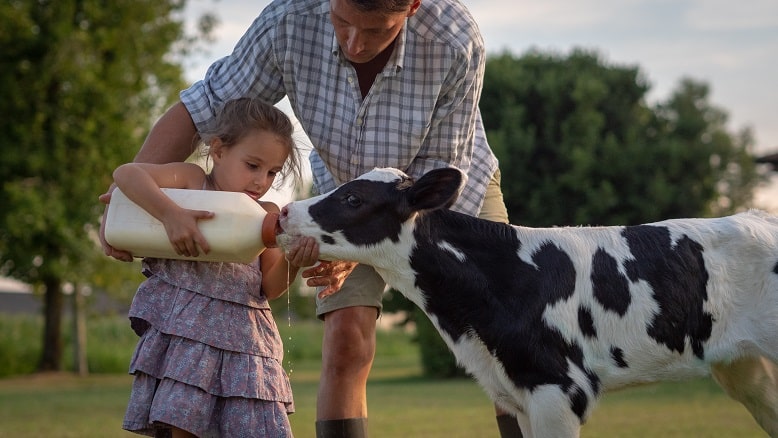
How Methane From Cows Causes Global Warming
The top five industries responsible for 98% of total methane emissions coming from human activity are:
- Agriculture
- Oil and gas
- Coal mining
- Solid-waste management
- Wastewater management
A considerable shift toward a 1.5°C warming pathway would be enabled if the largest methane producers cut their annual worldwide methane emissions by 20 percent by 2030 and 46 percent by 2050.
Agriculture is at the top, and cow methane emissions make up almost 70% of the total emissions in this area. How is that possible? Each cow produces about 220 pounds of methane annually. Multiply that by 1 billion cows, and you will better understand why something needs to change in the beef and dairy industry to make agriculture more sustainable and eco-friendly.
Why is this so crucial and urgent? Methane has 80 times the short-term warming potential of carbon dioxide, making it one of the most potent greenhouse gases. In fact, scientists estimate that half of the warming occurring over the following two decades will be caused by the increasing amounts of methane in the atmosphere.
Its ability to trap heat makes even minor increases in methane levels significant for climate change. The more methane we produce, the faster the planet heats. Therefore, reducing the amounts of methane is essential if we want to counter climate change in a relatively short time.
The Difference Between Methane From Cows and Carbon Dioxide From Fossil Fuels
Carbon dioxide concentrations are at their highest point in at least 3 million years, meaning billions of tons of heat-trapping gas accelerate global warming. Despite the Paris Agreement in 2016, the amounts of carbon dioxide are growing yearly — we released 36.44 billion tonnes of CO2 in 2019 alone.
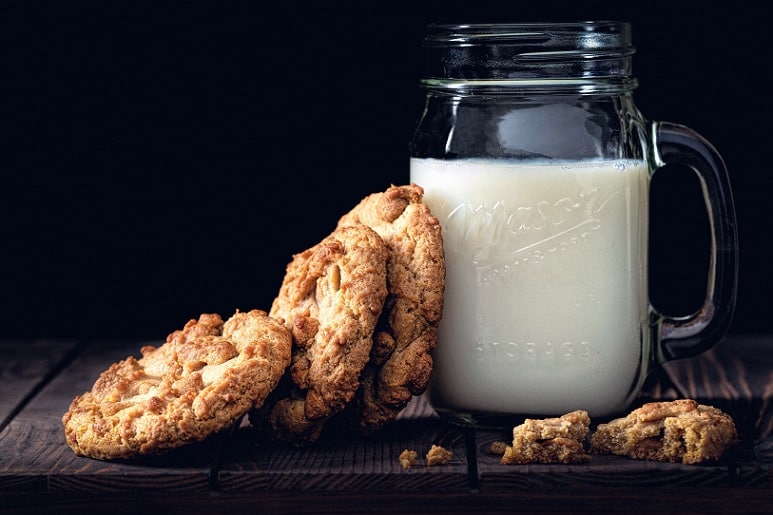
Reducing methane gas from cows is crucial because it can buy us time to create sustainable solutions to fight climate change. But if we want to have long-lasting benefits, we must take into account:
- How each greenhouse gas warms the planet
- Where carbon comes from
One of the most significant differences between methane and carbon dioxide is their long-term effect. Methane traps heat more effectively, but its effects last around 12 years, so they aren’t cumulative in time.
On the other hand, carbon dioxide will be present in the atmosphere in large quantities for at least a century. The more we produce, the higher the concentration of greenhouse gases in the atmosphere will be.
The other critical aspect is that methane from sources like cattle starts as carbon dioxide already in the atmosphere — plants absorb it, then they become part of the cows’ diet. The gases produced by burning fossil fuels come from a different source — the carbon, in this case, has been out of the atmosphere for millions of years, so by burning fossil fuels, we continue to add impressive amounts of carbon that contribute to heating the planet.
Working towards sustainable agriculture fixes part of the climate change issues. Still, these efforts are effective only if we stay focused on developing strategies to reduce carbon dioxide emissions from burning fossil fuels.
Cattle as the Major Source of the US Methane Emission
In the US, the top three sources of methane emissions are:
- The combined energy sector that relies on fossil fuels (40%)
- Livestock (mostly enteric fermentation) (36%)
- Landfills (18%)
Over 95% of the methane emissions associated with enteric fermentation come from cattle farms. It makes cows the livestock species with the highest impact on climate change in the United States, despite cattle farming here being significantly more productive than in other countries. The carbon footprint of North American beef production systems is between 10 and 50 times lower than in countries from many African countries or India, but this doesn’t seem to be enough.
The industry must continue to invest in innovation and find new ways to support overall measures to reduce its carbon footprint and fight climate change.
Ways to Reduce Methane Emissions From Cows
The demand for dairy products and meat is growing, but reducing consumption can only do so much, and we must seek the answer to this crisis with the producers, not consumers.
Farmers can use three primary methods to reduce methane emissions from cattle:
- Controlling the animals’ diet
- Reducing the number of animals on their farms
- Investing in effective waste management
Dietary measures
The cow’s diet influences methane emissions — generally speaking, increased feed intake and poorer feed quality result in more significant methane emissions. Moreover, better pastures, carbohydrate types, the inclusion of fat, and amounts of feed consumed seem to all reduce the methane released through enteric fermentation.
Animal breeding
Studies have shown that bred type has a significantly lower effect on reducing carbon footprint than the cattle’s diet. However, breeding for increased productivity (growing a lower number of cows and still producing the same amount of dairy products and meat) is likely to reduce methane emissions and the carbon footprint of animal products.
Waste management
Cow dung includes a small percentage of methane, so its decomposition contributes to the cattle’s carbon footprint. The good news is that farms and facilities of all sizes can capture methane from cow dung to create heat and energy, making manure management an economically feasible measure to cut down methane emissions. Cow dung biogas is a sustainable energy source that enables animal farms to reduce their carbon footprint while becoming more self-sustainable, with minimum investment. With technology available like HomeBiogas, you can now put cow manure to good use to make your cooking gas with the methane produced and also organic Bio-fertilizer. It works by digesting large amounts of manure in an oxygen-free environment using a biogas-producing system to create biogas, which is then burned to generate carbon-neutral heat or power. The used sludge returns to the soil as fertilizer, so nothing gets wasted.

HomeBiogas 2
Designed for the next generation of green innovation.
New Possible Solutions From the Scientists
Environmentally friendly dairy cow farming is possible, and new studies aim to identify innovative ways to reduce methane emissions and eliminate the significant connection between cows and climate change.
Most studies focus on improving cattle diet to reduce methane from enteric fermentation with promising results. Research has found that seaweed supplements lower methane levels in dairy cows, with no differences in the flavor of the meat or milk production when animals eat it.
According to New Zeeland specialists, a vaccine that reduces methane emissions from ruminants can also be a solution to control emissions. The advantages include zero requirements for farm systems to change and no residues in the process. The goal of research in this area is to pinpoint the precise antigens that will stop methanogens in the rumen from growing without impacting the cows’ health.
Another area of interest for scientists is selective breeding. Recent studies showed that genotyping animals could support breeding for feed efficiency and methane reduction, which could further reduce agriculture’s impact on climate change. However, innovation in this research domain is slow, as multiple factors need to be considered before turning selective breeding into a large-scale solution.
Atmosphere Methane Issue: Past and Future
Methane concentration in the atmosphere seems to be on the rise, but the causes or the long-term impact on climate change are somehow still a mystery. According to studies, different methane sources have distinct isotopic signatures of methane molecules and determine variations in the gas composition, so we’re looking at various possible effects on the environment.
Existing data says that as much as 85% of the increase in emissions in the last 15 years is attributed to microorganisms, with the remaining 15% coming from the extraction of fossil fuels.
However, it’s still difficult to determine how the contributions of bacteria from various systems will continue to impact methane emissions. For example, due to global warming effects, naturally occurring emissions from wetlands might generate more methane than livestock and landfills.
And while reducing methane emissions from cows is a valuable step forward, focusing on cutting down emissions from oil and gas seems to be a far more critical and effective way to fight climate change. In both cases, the benefits would be significant for the planet, increasing the chances of reaching the 1.5°C warming goal set by the Paris Agreement.
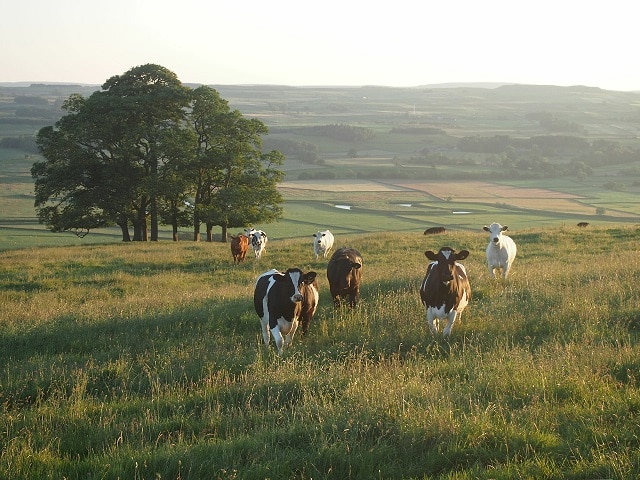
Final Thoughts
Cows and climate change seem to be directly connected due to the high number of animals living on farms and their still too high carbon footprint. Despite ongoing efforts to make dairy and beef production more sustainable, the global industry is still one of the primary sources of methane emissions worldwide.
The issue is complex, as extreme care is necessary to balance the need to feed the world population and reduce farming carbon footprint. Therefore, finding ways to reduce demand for beef and dairy products, improve cows’ diets, and manage cow waste are all effective ways to minimize methane emissions.
However, the idea that fixing the global methane emission from cows issue will be enough to control the concentration of greenhouse gases in the atmosphere is an illusion. All major industries contributing to methane emissions must work toward similar environmental goals to guarantee success. Not just agriculture but also oil and gas, coal mining, solid-waste management, and wastewater management must find ways to minimize their environmental impact.




